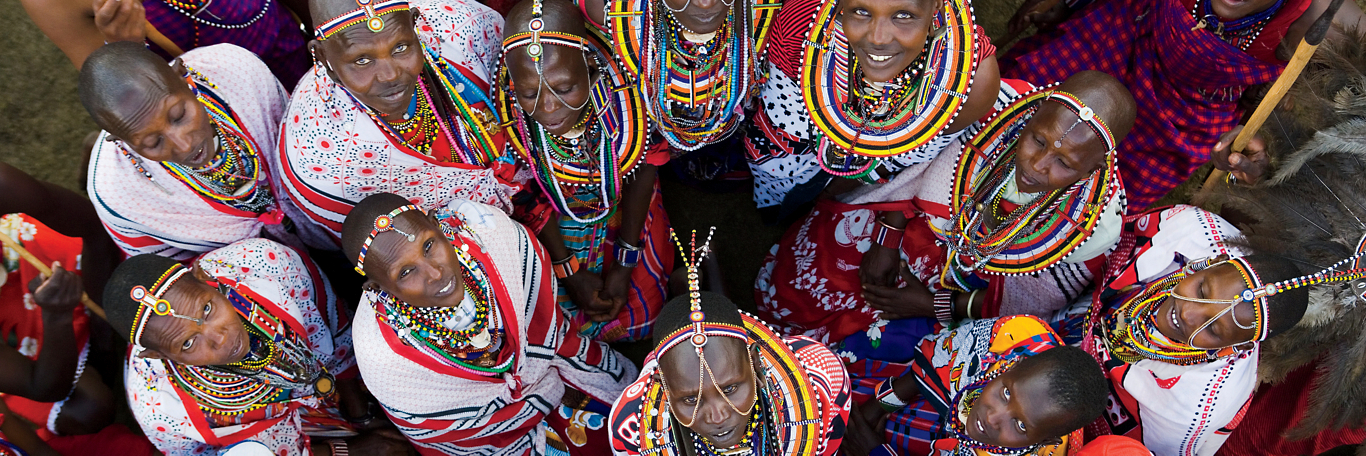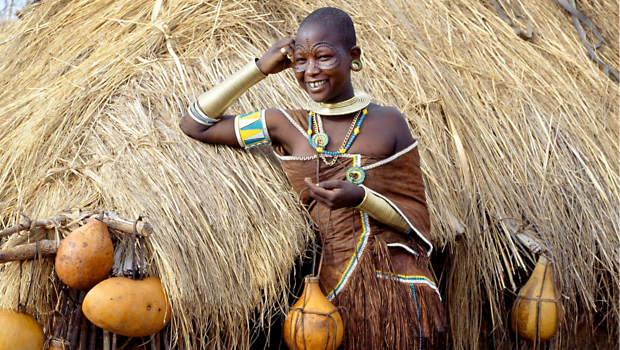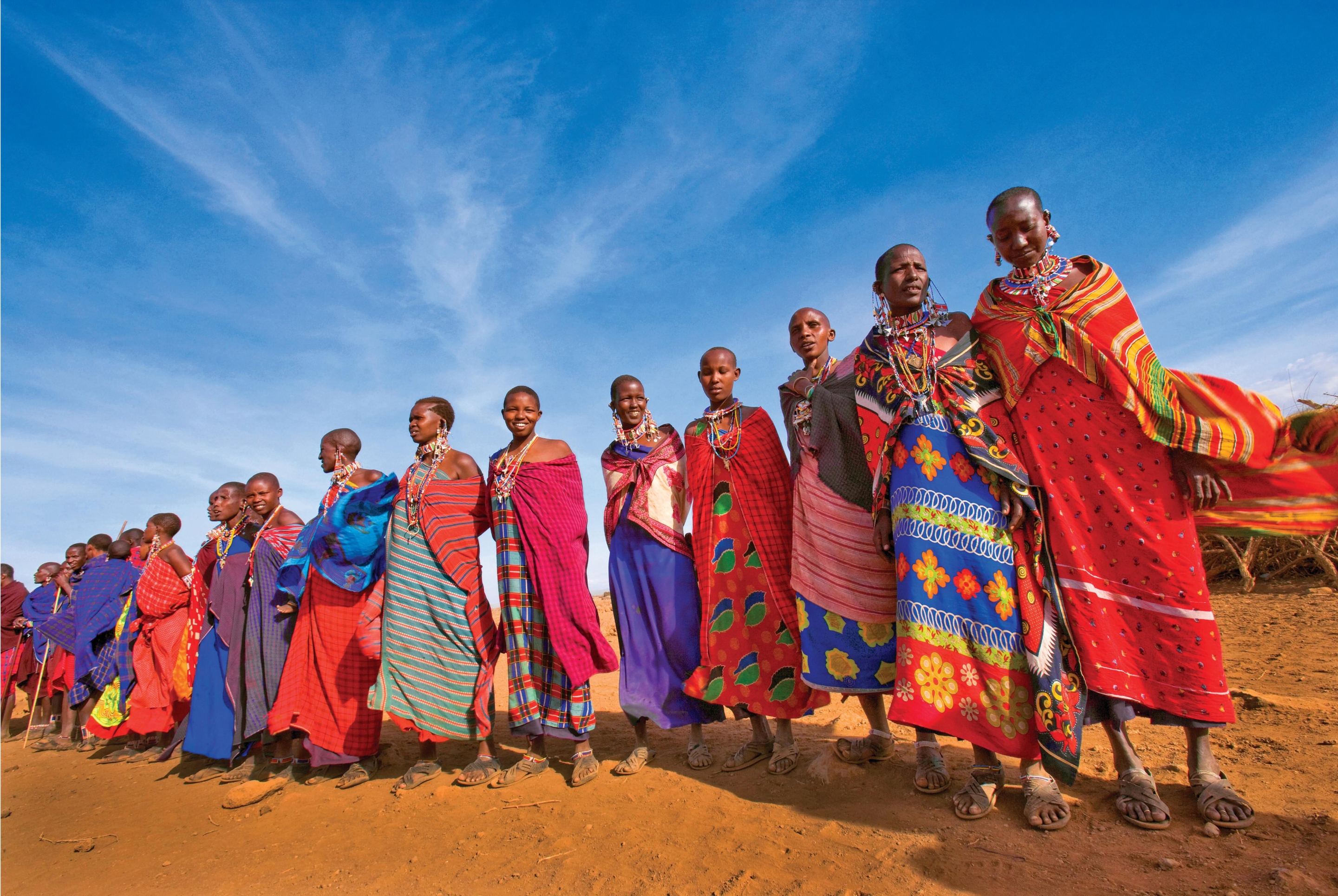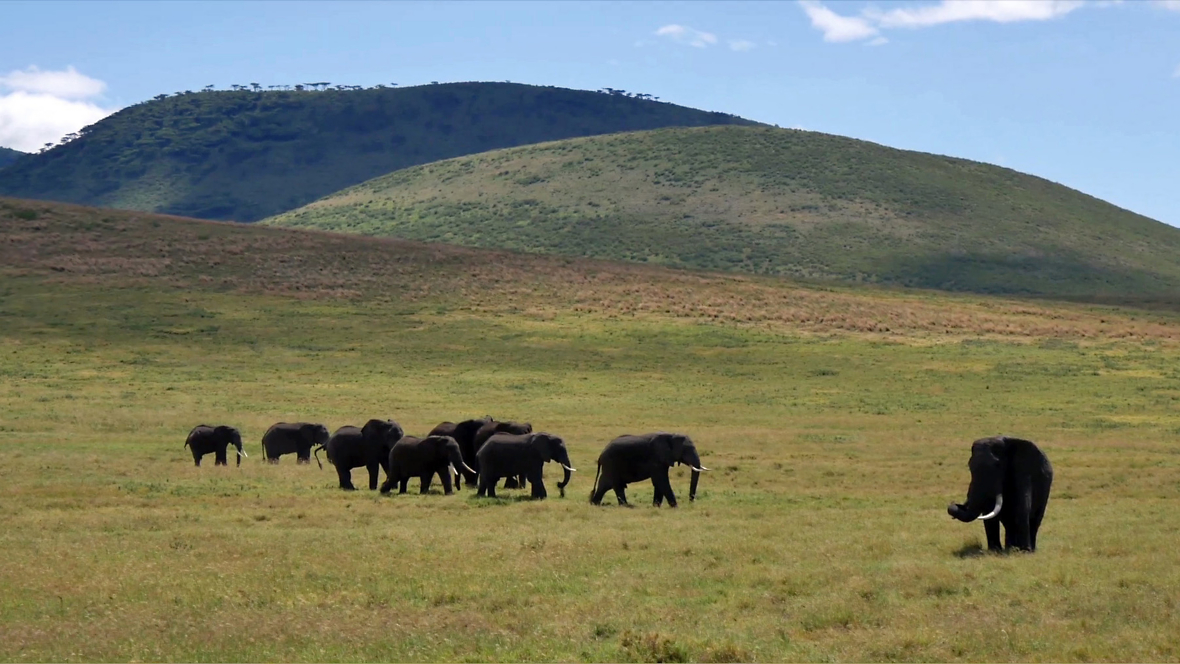You’re receiving this message because your web browser
is no longer supported
We recommend upgrading your browser—simply click the button below and follow the instructions that will appear. Updating will allow you to accept Terms and Conditions, make online payments, read our itineraries, and view Dates and Prices.
To get the best experience on our website, please consider using:
- Chrome
- Microsoft Edge
- Firefox
- Safari (for Mac or iPad Devices)

tanzania
Overseas Adventure Travel, the leader in personalized small group adventures, has been changing lives through travel since 1978. Our 2 Tanzania safaris will take your small group into the heart of a destination to venture where the big tour groups can’t. No matter which adventure you choose, O.A.T. always offers our travelers:
- Personalized travel experiences, with options to arrive early, stay later, add pre- or post-trip extensions, stopover in popular cities, and more.
- Small group of no more than 16 travelers, allowing us to take you off the beaten path and immerse you in local culture.
- Adventures tailored to the solo traveler, with FREE Single Supplements and 23,000 single spaces being offered in 2024.
- Expert Trip Experience Leaders, residents of the region you visit who will share their insights and bring your destination to life.
When you set out on an O.A.T. Tanzania safari, there are endless travel experiences waiting for you. Keeping an eye out for Africa's Big 5 during game drives with expert guides. Drifting off to sleep with the sounds of the Serengeti all around you in our private tented camp. Exploring the caldera of Ngorongoro—the ancient walls of a collapsed volcano. Making authentic, cultural connections during a visit to a traditional Maasai village. You can experience all of this and more when you journey to Tanzania with O.A.T.
Your FREE Personalized Tanzania Travel Planning Guide
Your FREE Personalized Tanzania Travel Planning Guide is on its way
Want to continue learning about Tanzania? Return to our Tanzania destination page.
Go Back To TanzaniaPlease note: To complete your registration, check your email—we sent you a link to create a password for your account. This link will expire in 24 hours.
Compare Our Adventures
Click 'Select to Compare' to see a side-by-side comparison of up to adventures below—including
activity level, pricing, traveler excellence rating, trip highlights, and more

Spend 10 days in Tanzania on
Kenya & Tanzania Safari: Masai Mara to the Serengeti
O.A.T. Adventure by Land
Kenya: Nairobi, Masai Mara National Reserve, Amboseli National Park | Tanzania: Tarangire National Park, Ngorongoro Highlands & Crater, Serengeti National Park

Spend 12 days in Tanzania on
Safari Serengeti: Tanzania Lodge & Tented Safari
O.A.T. Adventure by Land
Tanzania: Arusha, Tarangire National Park, Ngorongoro Highlands & Crater, Serengeti National Park, Karatu
Spend 6 days in Tanzania on our
Post-trip Extension
The Spice Island of Zanzibar
The Spice Island of Zanzibar

Spend 6 days in Tanzania on our
Post-trip Extension
Tanzania: The Ngorongoro Crater & Serengeti Private Tented Safari
Tanzania: The Ngorongoro Crater & Serengeti Private Tented Safari

Spend 5 days in Tanzania on our
Post-trip Extension
The Spice Island of Zanzibar
The Spice Island of Zanzibar

Compare Adventures
Add Adventure
including international airfare
per day
*You must reserve the main trip to participate on this extension.
**This information is not currently available for this trip. Please check back soon.
You may compare up to Adventures at a time.
Would you like to compare your current selected trips?
Yes, View Adventure ComparisonTanzania: Month-By-Month
There are pros and cons to visiting a destination during any time of the year. Find out what you can expect during your ideal travel time, from weather and climate, to holidays, festivals, and more.
Tanzania in January-February
While the Northern Hemisphere experiences some of its coldest weather around this time of year, January and February bring heat and high humidity to Tanzania during its green season. The landscapes are lush, and many animals give birth to their offspring around this time which means it's a prime time for wildlife viewing: calving season means plenty of baby wildebeest, but also plenty of active predatory kills. Migratory birds are present and visible around this time of year, and as many animals are heading north in search of vegetation and water, you're more likely to spot them grazing. While the humidity is high in surrounding areas, the high altitude of Ngorongoro Crater makes it a cooler haven for animals and travelers alike.
Holidays & Events
- February: Sauti za Busara is an African music festival that takes place annually in Stone Town, Zanzibar.
Must See
Because this is calving season, baby wildebeest are filling the plains and attracting larger preditors. You may be surprised to see that wildebeest calves are born with the ability to walk, and may even begin running minutes after birth.
Tanzania in March-May
March begins a period of heavy rains that typically continues through May, though in recent years it's become less predictable, with May being uncharacteristically dry. With the torrential rains come floods, and even higher humidity. Due to flooding, Tanzania's roads are sometimes subject to closure, meaning certain safari camps don't operate this time of year. Depending on the year, this may mean less access to national parks, but also less tourists. Some even say it's the best time to go when there are fewer crowds and more animals taking advantage of the abundant water sources.
Holidays & Events
- April 26: Union Day (also known as Unification Day) commemorates the 1964 joining of Tanganyika with the People's Republic of Zanzibar to form what is today known as Tanzania.
Must See
The heavy rains this time of year bring higher water levels to Ngorongoro Crater, increasing your chances of seeing huge flocks of flamingo populate the area.
Tanzania in June-August
June begins Tanzania's dry season, attracting the largest crowds of the year. Late June is usually when there are the most safari vehicles. Decreases in both temperature and humidity make it a very comfortable time to be out on safari. June is also the mating season for migrating wildebeests. As the land becomes drier, watering holes disappear, meaning larger groups of animals congregate at whatever water sources they can find. July begins to warm up a bit and we continue to see clear skies. Still one of the driest times of the year, this is when you typically begin to see clouds of dust generating from safari vehicles. (Pro-tip: bring a scarf and sunglasses if you choose to go on safari this time of year.) By August, the dry conditions clearly have taken a toll on the thinning grasslands, making animals easier to spot from far distances.
Holidays & Events
- July: Zanzibar International Film Festival
- Late July: the annual Mwaka Kogwa Festival in Zanzibar is a traditional celebration of the Shirazi or Persian new year.
Must See
As the land dries out starting in June, millions of wildebeest, antelope, and zebra head north in search of water and better grazing opportunities in what is known as the Great Migration. Individuals form groups, and those groups combine and grow into larger and larger herds as they start to relocate. While catching sight of this sought-after phenomenon is rare, you may see the herds encountering crocodiles as they struggle to make their way across the Serengeti's Grumeti River, one of the first dramatic obstacles nature throws their way. By August, many of the surviving members of the large herd will have made it into Kenya.
Tanzania in September-October
Dry, less humid weather continues around this time of year, and the moderate climate and reduced cloud covering make it a great time to climb Mt. Kilimanjaro. Because peak season is over and the animals of Ngorongoro Crater don't migrate, this is also prime time for wildlife viewing at the world's largest inactive volcanic caldera. Though most are still up north, some of the animals of the great migration may begin their journey back south from Kenya. Come October, the temperatures are back on the rise and rainfall begins a gradual increase, though it's still nowhere near that of the wet season.
Tanzania in November-December
Short overnight rains in the north signal the beginning of the green season and attract animals who had previously left in search of more hospitable lands. In the southern and western regions of Tanzania, these rains may continue through May. Any of the animals who still haven't returned from the great migration typically will have come back to the Serengeti from Kenya by November. Short rains persist into December, freshening up landscapes that had become powdered with dust.
Holidays & Events
- December: Swahili Fashion Week is an annual showcase for fashion and accessory designers from Swahili speaking countries.
Watch this film to discover more about Tanzania
Average Monthly Temperatures
High Temp Low Temp
Tanzania Interactive Map
Click on map markers below to view information about top Tanzania experiences
Click here to zoom in and out of this map
*Destinations shown on this map are approximations of exact locations
Serengeti National Park
Named after a Maasai word meaning "land that runs on forever," the endless plains of the Serengeti are sure to leave a lasting impression. Founded in 1951, Serengeti National Park is Tanzania's oldest park, and its 5,700 square miles of protected plains, riverine bush, woodland, and acacia grassland, have collectively been designated as a UNESCO World Heritage Site in recognition of its ecological significance and biodiversity. With what may be the largest population of lions in all of Africa; over 500 bird species; and a host of other animals including cheetah, leopard, elephant, the rare black rhino, and more, the Serengeti's diversity of wildlife is unrivaled. This is especially evident during the great migration, a yearly phenomenon where hordes of animals—including more than a million wildebeest and 200,000 zebras—cross the plains of Tanzania into Kenya in search of new grazing lands and water.
Explore Serengeti National Park with O.A.T. on:
- Safari Serengeti: Tanzania Lodge & Tented Safari
- Kenya & Tanzania Safari: Masai Mara to the Serengeti
- Post Trip:Tanzania: The Ngorongoro Crater & Serengeti Private Tented Safari on Rwanda: Mountain Gorillas in the Land of a Thousand Hills
Ngorongoro Conservation Area
With zebra and wildebeest grazing in the plains; elephant roaming the forests; and cheetah, rhino, flamingo and more coloring the landscape, it's no wonder the name Ngorongoro comes from the Maasai word for "gift of life." The conservation area's most prominent feature is the Ngorongoro Crater, the remains of a collapsed volcano the size of Mount Kilimanjaro. What now remains is the world's largest volcanic caldera, and is somewhat of a sanctuary for wild animals, nurturing a delicate ecosystem within its towering walls.
Visit Ngorongoro Conservation Area with O.A.T. on:
- Safari Serengeti: Tanzania Lodge & Tented Safari
- Kenya & Tanzania Safari: Masai Mara to the Serengeti
- Post Trip:Tanzania: The Ngorongoro Crater & Serengeti Private Tented Safari on Rwanda: Mountain Gorillas in the Land of a Thousand Hills
Tarangire National Park

Tarangire National Park is Tanzania's sixth largest park, well-known for its prominent baobab trees, large elephant population, and record-breaking concentration of breeding bird species. With nine distinct vegetation zones, and a diverse geological landscape, the park is home to many game animals including cheetah and lion. The Tarangire River, which runs through the park and is the region's main fresh water source, draws a wide array of wildlife during the dry season. During the rainier months certain animals seek refuge elsewhere, while birds, and animals like buffalo and eland which have different migratory patterns, take their place in abundance.
Explore Tarangire National Park with O.A.T. on:
Hadzabe and Datoga Cultural Experience

Get a true sense of tribal culture when you visit the Hadzabe and Datoga peoples. The Hadzabe tribe is made up of hunter-gatherers who have retained much of their culture, customs, social structure, and clicking-based language that date back 10,000 years to Tanzania's aboriginal population. The neighboring Datoga tribe, known for their tattoo-like scarification patterns, and thought to have originated in Ethiopia 3,000 years ago, is comprised of skilled farmers and craftsmen. While they used to be a nomadic people, a visit to their village reveals the ways in which planting maize has helped them establish more permanent roots.
Immerse yourself in Hadzabe and Datoga culture with O.A.T. on:
Maasai Village

Visit a Maasai village to experience the culture and traditions of modern-day tribe members. Historically semi-nomadic, today's Maasai people have become more sedentary, living off the land and raising cattle in villages in Tanzania as well as Kenya. Speaking with the local residents, you may learn about the tribe's history, customs (such as building bomas, or mud houses), and societal rites of passage—including the initiation ceremony for men to become warriors. This coming of age ceremony typically occurs every 15 years or so, can last up to ten days, and involves rituals such as dancing, singing, and perhaps most controversial, adult circumcision.
Visit a Maasai Village with O.A.T. on:
Traveler Photos & Videos
View photos and videos submitted by fellow travelers from our Tanzania adventures. Share your own travel photos »


